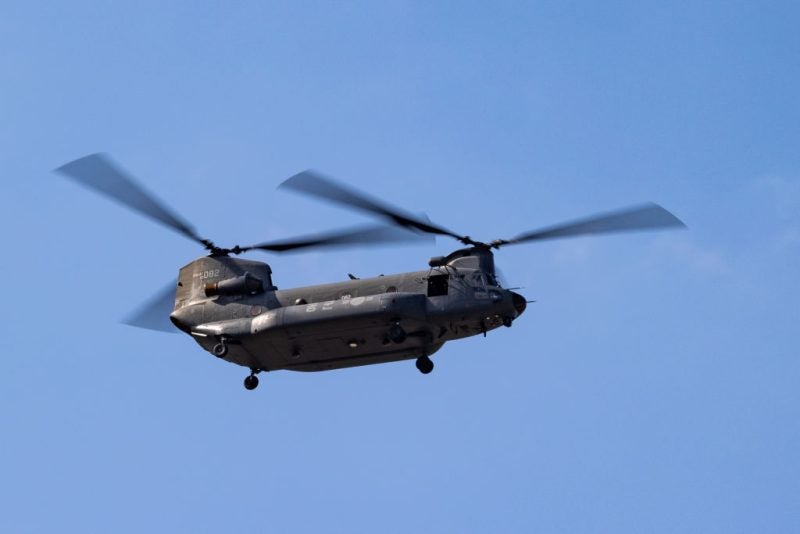
The release this week of the International Institute of Strategic Studies (IISS) 2022 Strategic Survey puts the US sale of new platforms to South Korea into context with broader strategic concerns in the Indo-Pacific.
Following US State Department approval on 6 December, South Korea may purchase 18 Boeing CH-47F Chinook heavy-lift military transport helicopters and supporting equipment for $1.5bn.
Given that the US Indo-Pacific Strategy places a strong emphasis on alliances and partnerships, the IISS 2022 Strategic Survey recommended that the US approach would benefit from a more active trilateral partnership with South Korea and Japan. According to the IISS, Washington has made efforts to revitalise the country’s ties with South Korea in an effort to repair the strains that were placed on the alliance by the previous US administration. A challenge for the administration of US President Joe Biden is to ensure that key US allies work together; friction between Japan and South Korea continues to frustrate Washington’s approach to the region.
The deal includes various missile warning and communication technologies, and is being carried out as part of Seoul’s Heavy Utility Helicopter-II project, with deliveries expected to be completed by 2028.
According to a report by GlobalData, South Korea Defense Market Size and Trends, Budget Allocation, Regulations, Key Acquisitions, Competitive Landscape and Forecast, 2022-27, South Korea will spend a total of more than $4.6bnbetween 2022 and 2027.
The election of the conservative Yoon Suk-yeol as president of South Korea in March 2022 raised American expectations that South Korea may improve its relations with Japan, according to the IISS, and that South Korea may be ‘less inclined to appease China while also working to strengthen its alliance with the United States,” helping to ensure its North Korean policy is not at “cross-purposes” with US approaches.
However, the IISS finds that the differences of opinion between Japan and South Korea have not been able to be resolved. Despite the fact that both capitals have new leadership, there is no assurance that Seoul and Tokyo will be able to reach an agreement on a mechanism to examine their historical grievances while also concentrating on their common security concerns arising from continued tensions with North Korea, the continual regional provocations by China, and the multitude of non-traditional security issues that are now being faced.
The nation will acquire various categories of military rotorcraft in order to maintain a state of readiness to offer military measures in the context of the “fluid and ever-changing” relations between South Korea and North Korea, according to Rouble Sharma, defence analyst at GlobalData.
Currently, South Korea operates the world’s third-largest international Chinook fleet, following the US and the UK. With this deal, South Korea has reinforced its defence posture with technologically advanced equipment to “deter any security threat posed by an unpredictable North Korean regime”, said Sharma.
Sharma explained that after considering the possibility of modernising its current fleet of D-models for some time, South Korea ultimately came to the conclusion that it would be better off purchasing a more recent variety of helicopters since these models are both “more cost-effective and technologically compatible”.
The versatility of the Chinook helicopter allows it to be used in a variety of environments and terrains, making it a valuable force multiplier for the South Korean armed forces. The tandem-rotor helicopters have increased capabilities for hauling cargo, which will enabling them to be employed for transport, combat search and rescue, medical evacuations, and disaster relief.




